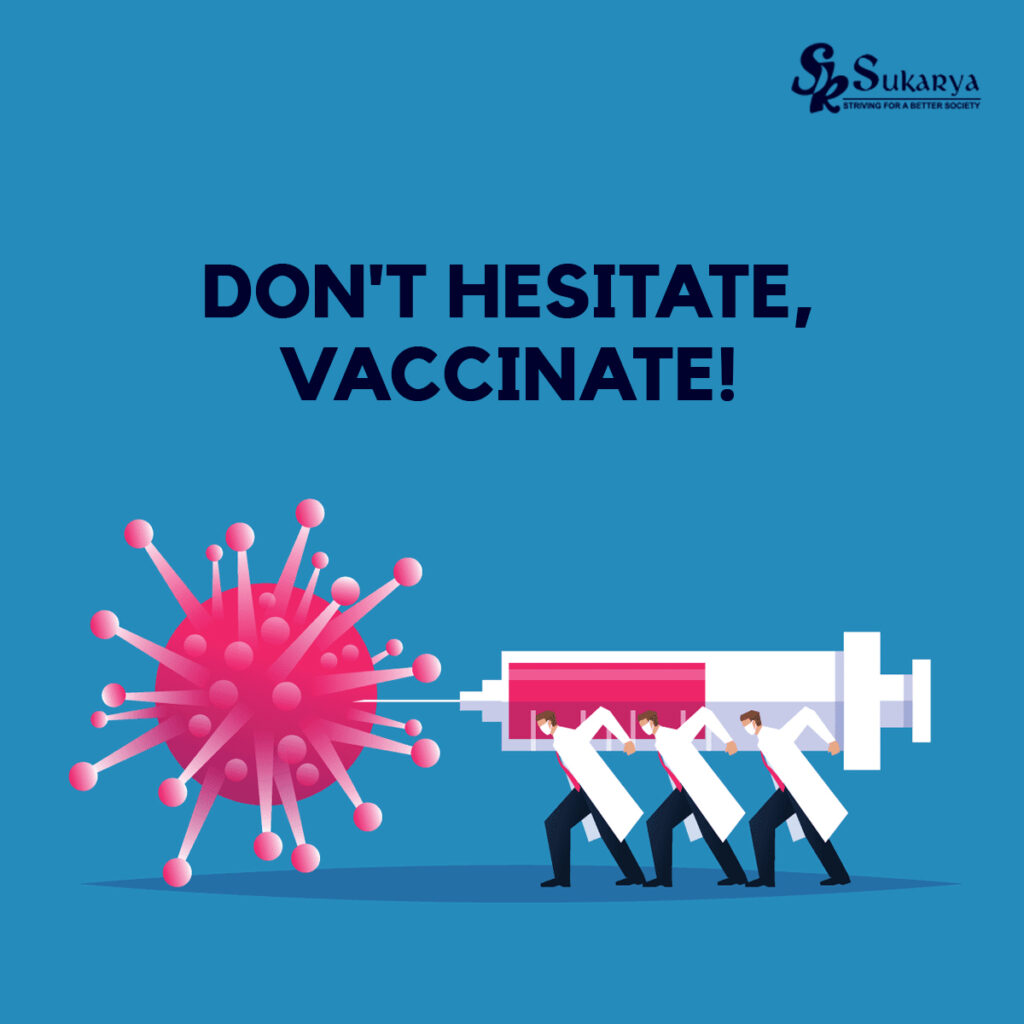by Meera Satpathy

When one of the husbands of our beneficiaries in the urban slum of Gurugram where we run several projects, hesitantly walked up to me and asked if I would be okay to see a video on his phone, little did I know what the gentle and affable man was going to open up and share thereafter. The video was propagandist in nature drilling anti Covid-19 messages directed mostly at men, impressing upon them the wisdom of staying away from Western concoctions in the name of vaccines and which made men impotent, prone to getting epileptic fits and memory loss. Seeing our NGO working towards addressing issues related to vaccine hesitancy in the slums of Delhi, Gurugram, and villages of Haryana and Rajasthan, he was fearing he would be forced to go in for the vaccine and since he and his wife were trying to having a child for the last seven years without success, he would have to say goodbye to his dreams of becoming a father.
I realised just convincing him and reassuring him verbally would not help. Nor would it help for him to see that the male members in the office and in our families were fully vaccinated and healthy and also the younger men were impregnating their wives without any problem! We decided to step up our advocacy work, hold regular awareness sessions for the underprivileged, especially those who are not educated but are smart with accessing information on their phones and therefore vulnerable to fake media. I am planning on making these sessions as online video capsules with expert interviews and Q & As and recording them as videos and sharing them with the communities we have a presence in with a request for them to share it generously.
Many harbour notions that the government is forcing people to take fake vaccines which have only saline water; menstruating women who take the vaccine will not get pregnant and those who do get pregnant will give birth to deformed children. Now even if we get past the issue relating to dispelling of myths and misconceptions we have to make sure that the vaccines are made accessible. Not all households have televisions and smart phones and also do not have Aadhar cards. So, even if they agree to take the vaccine they do not know how to get it.
The need of the hour today is for governments to actively work with NGOs, civil society and volunteer groups. Private sector needs to step up their support to these outfits so that time is not lost in boosting vaccine coverage. Innovative approaches must be applauded and replicated. Like in the remote Melghat tribal village of Maharashtra a video series was launched by the Integrated Tribal Village Project and taken to the doorstep of villagers by local NGOs. Villagers do not own smartphones but were receptive to the audios and videos that were played for them in their local language and dialect. Local doctors visited the villages and registered villagers on the CoWin app using their mobile phones. Several villages in the area now have achieved 100% vaccine coverage. Local language and culturally relatable Covid-19 vaccination awareness campaigns, recommended by both the World Health Organization and India’s health ministry, are getting under way slowly in other tribal-dominated regions across India as well, using songs and memes in the local dialects.
Health activists are also suggesting that state governments incentivise communities in return for getting vaccinated. It could be in the form of dry rations. This has to be done gently without coercion and blackmail. According to some news reports villagers are being forced by the administration to get vaccinated with the threat that they would not be given ration or MGNREGA wages if they did not get inoculated. Unless there is a collaborative approach we will not achieve the kind of success that is needed to tackle vaccine hesitancy in the country. We have to work together to power more public private partnerships to make sure that the five C’s of Context, Comfort, Convenience, Complacency, Communication in the context of Covid-19 vaccines are borne in mind when taking initiatives related to vaccine coverage in urban slums and rural India to scale.
